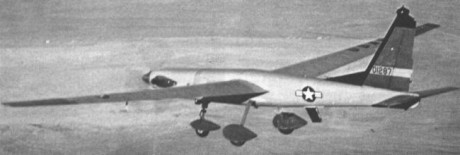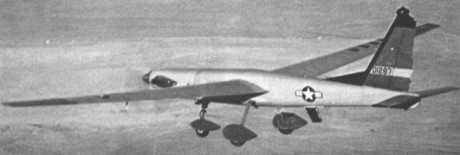European news outlets reported last week that the German Euro Hawk Unmanned Air Vehicle (UAV) program will be terminated due to the prohibitive cost of modifying the platform to conform to collision avoidance requirements. If the reports are true, Euro Hawk will join a similar project which had the poor luck to be canceled not due to cost over-runs, performance, or technical issues, but due to Air Traffic Control limitations.
The XQM-93 UAV, code-named Compass Dwell, was conceived by the Air Force in the late 1960’s to fulfill a role extremely similar to the current tasking of Euro Hawk. Compass Dwell was intended to provide 28 hour endurance at an altitude of 40,000 and deliver persistence surveillance of Warsaw Pact air defense systems. Euro Hawk is believed to be tasked to provide surveillance of Eastern European military assets.
Image credit: USAF via Designation-Systems.com
Two variants of the project were built, both using a converted Schweizer sailplane. The XQM-93 airframe was built by Ling Temco Vought and mated to a turboprop power plant. The other model, built by Martin Marietta and designated Model 845, featured a turbocharged piston engine. Both airframes flew successfully in 1972, with the Model 845 achieving a flight time of 27 hours and 54 minutes. The UAVs were intended to target Soviet air defense radars and provide standoff jamming during wartime.
Compass Dwell was intended to operate high above commercial air traffic, but would still need to climb and descend through those altitudes during each mission. European air traffic controlling agencies refused to allow the XQM-93 to operate in their airspace, and the program was canceled in 1973.
The termination of these two programs demonstrates the unique challenge posed to operators of UAV systems. Despite the inherent performance benefits in unmanned systems, the limitation of sensors and need to safely de-conflict airspace remain just as much hurdles in 2013 as they did four decades ago.
Michael Glynn for TheAviationist.com















